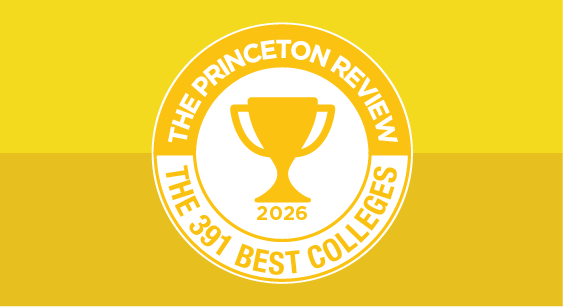
Starting in March 2023, the College Board began to transition away from the pencil-and-paper version of the SAT that they introduced in 2016 with the launch of the Digital SAT outside the United States. By 2024, all administrations of the SAT will be of this computer-based version of the test. With this change, the College Board has made significant changes to the format of the SAT. However, there are also changes to the content of the SAT that you should be aware of as you prepare for the test.
The College Board claims that “the digital SAT will continue to measure the same skills and knowledge that students are learning in high school and that matter most for college and career readiness.” In other words, the stuff that the pencil-and-paper SAT tests should be the same as what you’ll see on the Digital SAT. At a deep level, this claim seems to be true – the sorts of cognitive skills tested on the Digital SAT are similar to those tested on the paper-and-pencil test. However, the difference in formatting of the two tests makes the test-taking experience very different, which means the best ways to approach the Digital SAT differ from the pencil-and-paper SAT.
Reading and Writing
The Digital SAT’s Reading and Writing modules have questions that can be broken into two major categories: Reading and Writing. Reading questions always come first in the Reading and Writing module and can be broken into seven different question types:
- Vocabulary: Filling a blank or defining a word based on context.
- Purpose: Determining why the author wrote a text or included a sentence or how the author structured the text.
- Dual Text: Understanding how someone from one text would agree or disagree with a person or idea from another text.
- Retrieval: Determine what the author said about a person, place, or idea.
- Main Idea: Determine the central topic of the text.
- Claims and Charts: Choose an answer or information from a chart that would illustrate, strengthen, or weaken a claim.
- Conclusions: Choose the most logical concluding phrase or sentence to a text.
The questions will always appear in the above order, but not every question type will appear on every test. Within a given question type, if there is more than one question, the questions will appear in order of difficulty. Vocabulary questions test your knowledge of advanced vocabulary (so break out those flashcards!). The remaining question types require you to read closely and identify the key parts of the text that are needed to answer the question.
Writing questions come in three types:
- Rules: Making a sentence conform to the rules of Standard English.
- Transitions: Choosing a logical transition to connect two sentences.
- Rhetorical Synthesis: Choosing a sentence that accomplishes a rhetorical goal, such as showing similarities between two ideas.
As with Reading, the Writing questions will always appear in this order, with questions of the same type organized in order of difficulty. Rules questions require you to know and apply grammar and punctuation rules. Transitions questions ask you to determine the relationship between ideas (e.g. contrasting, providing examples, or making a conclusion) and then choose an appropriate transition. Rhetorical Synthesis questions provide a list of bullet points and ask for a sentence that accomplishes a goal.
Math
All questions within the Math modules are organized in order of difficulty, with the hardest questions towards the end of the module. About 75% of the questions are multiple-choice, with the remaining 25% student-produced response (i.e. free response numerical answers). Questions in Math are not organized by content area, so the order of topics will vary from test-to-test.
There are four “content domains” in Math on the Digital SAT:
- Algebra (~35%): Working with linear equations (i.e. equations without exponents).
- Advanced Math (~35%): Working with non-linear equations (i.e. equations with exponents, rational equations, and absolute value)
- Problem-Solving and Data Analysis (~15%): Working with basic statistics concepts, such as rates, percentages, and probability.
- Geometry and Trigonometry (~15%): Working with shapes, including trigonometric functions.
You may have noticed that about 70% of the Math on the Digital SAT is algebra in one form or another. Strength in this topic, as well as key strategies and use of the built-in calculator, is key to success in Math. Much of Problem-Solving and Data Analysis covers topics that you may have learned in middle school, so you should expect to spend time brushing up on these topics. Similarly, it may have been a while since you’ve done geometry, so prepare to do some review for the Digital SAT.
In addition to the topic areas, many questions in Math will be presented as word problems. Having a methodical approach to these questions is key to success. Furthermore, many questions contain graphics, such as xy -planes or tables. Finally, the Bluebook application does not allow you to highlight in Math, so you need to master the use of scratch paper for all your work.
Next Steps
Knowing the content tested on the Digital SAT is essential. Just as important is knowing the strategies that will allow you to demonstrate your knowledge and perform to your potential . The Princeton Review offers books, courses, and private tutoring. All of TPR’s offerings cover both the content knowledge and strategies you need to score more and earn admission to your dream school.
Explore Colleges For You
Connect with our featured colleges to find schools that both match your interests and are looking for students like you.
Get Started on Athletic Scholarships & Recruiting!
Join athletes who were discovered, recruited & often received scholarships after connecting with NCSA's 42,000 strong network of coaches.
Best 391 Colleges
170,000 students rate everything from their professors to their campus social scene.



